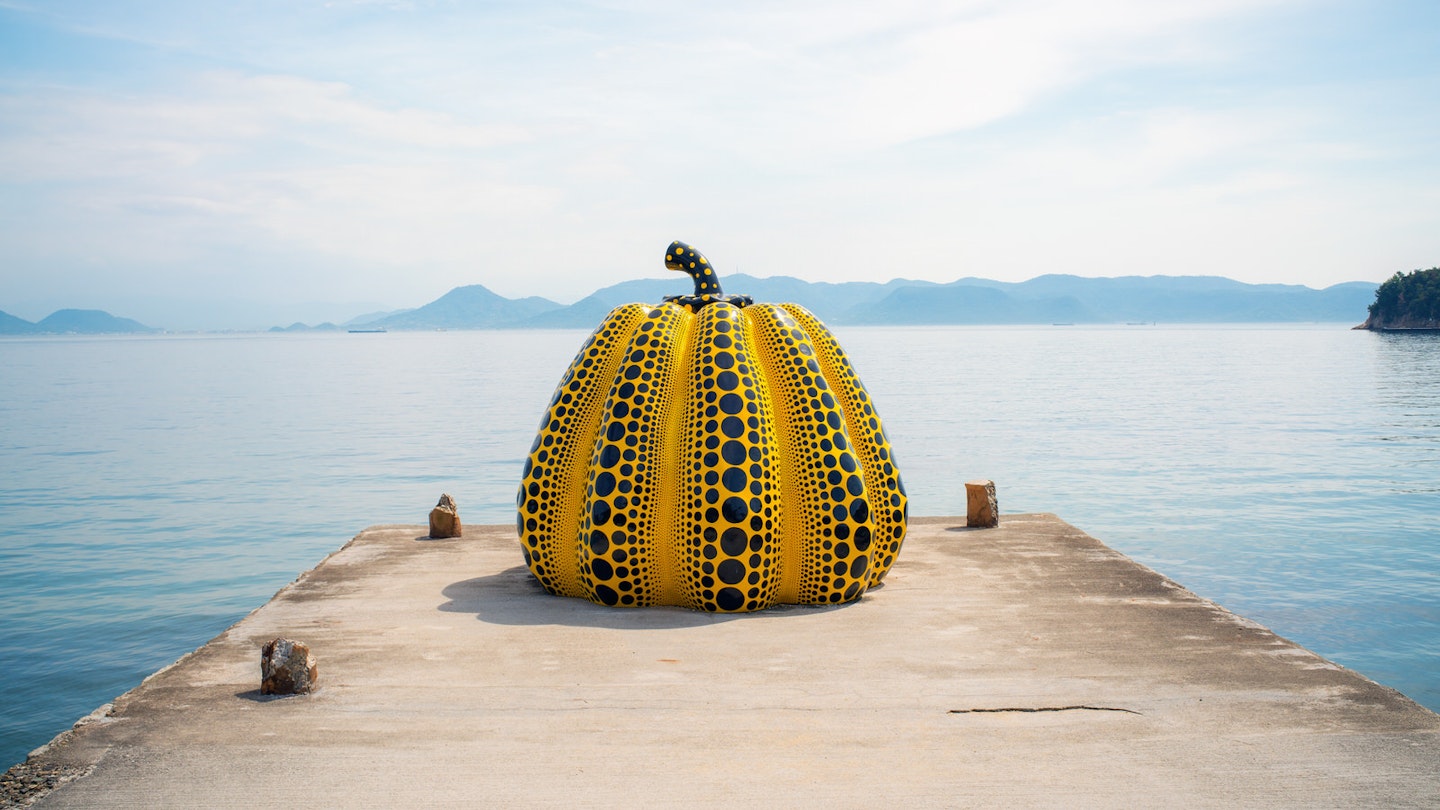In Japan, there’s a drive to create and experience things that are bigger, better, faster, and stronger than anywhere else in the world. Shibuya Crossing in Tokyo is one of the world’s busiest pedestrian crossings; the Shinkansen bullet train is the second-fastest train in the world at 320km per hour, and is set to get even faster; and the biggest Starbucks in the world can be found in Tokyo’s Meguro district.
While this fast-paced sensory overload may not appeal to everyone, Japan’s ambitious approach to entertainment and infrastructure applies equally to relaxation and contemplation. If you’re visiting Japan and want to experience the excitement while also finding space to breathe, you can strike that balance perfectly. The Japanese mastery of tranquility is unmatched.
Wander Tokyo’s Streets at Night
Tokyo is renowned for its chaotic energy, yet it excels in calmness as well. It’s easy to get swept away by the hustle and bustle, but if you stay in the quieter areas of the city, like Shinjuku’s City Hotel N.U.T.S, you can enjoy the best of both worlds. From Shinjuku, it’s easy to walk to popular destinations like Shibuya and Harajuku, skillfully avoiding busy train stations. Night-time strolls are particularly rewarding as you can navigate the city away from the daytime rush and fully appreciate the neon landscape.
Visit Tourist Destinations at Off-Peak Times
As a tourist in Tokyo, you have the advantage of enjoying attractions at your convenience. Golden Gai offers a maze of alleyways lined with over 200 charming bars, each seating only a handful of patrons. Visiting on a weekday evening can allow you to meander through these streets and soak in the ambiance. In the Nonbei Yokocho district of Shibuya, known as Drunkard’s Alley, find the intimate Bar Piano (1-25-10 Shibuya, Shibuya-ku), where the decor features antique chandeliers and crushed velvet. These bars may feel like portals into a different world, offering a peaceful escape from the bustling streets outside.
Embrace the Wonder of the Ghibli Museum
Once you step inside Ghibli Museum, situated on the fringes of Inokashira Park in west Tokyo, you’ll find yourself enveloped in the enchanting worlds crafted by Studio Ghibli’s Miyazaki Hayao. Each room offers a different experience—old film reels casting soft images on walls, a recreated artist’s workroom, or a vintage cinema—stirring a sense of childlike wonder. Tickets for international visitors can only be purchased through the Ghibli Museum website on the 10th of each month at 10 am Japan time, ensuring a limited flow of visitors and a more tranquil experience for those who manage to secure tickets.
Take the Time to Browse
Shimo-Kitazawa mirrors London’s Camden High Street, brimming with boutique shops, cozy cafes, and vibrant bars. It’s a paradise for browsers. Music enthusiasts should not miss Jet Set Records, a vinyl haven featuring a variety of genres. There’s something soothing about browsing through thousands of records. In Tokyo, coffee culture is significant, and by visiting RBL Café, you’ll discover that silence holds great importance too. This book café caters to small groups and solitary patrons alike, providing an escape to peruse bookshelves or work while savoring premium coffee blends.
Always Look Up
To manage its growing population and influx of tourists, Japan tends to build skyward, and some of the most exciting experiences lie between the fourth and 47th floors. In Osaka, the iconic Dotombori is home to colossal food replicas like giant prawns and inflated blowfish, leading you toward a fulfilling meal. Additionally, secluded bars hidden in former apartment buildings, such as Kinguu Bar, present a serene alternative to the lively nightlife scene. It juxtaposes the macabre with the quaint in a soundproofed retreat from the bustling streets below.
Escape the City
If tranquil islands appeal to you, make sure to include Naoshima on your travel itinerary. Although it requires a journey from Tokyo—Shinkansen, bus, then ferry—the stress of travel dissipates once you reach this small island in Japan’s Seto Inland Sea. With bicycles as the primary mode of transport and nightlife winding down between 10 pm and midnight, it offers a more relaxed pace of life. Surrounded by towering pine trees, secluded beaches, and the gentle sounds of the shoreline, your senses will be rejuvenated in this haven.
Appreciate Art in Silence
Naoshima’s Chichu Art Museum fosters an atmosphere of tranquility with its no-camera and no-speaking policy, elevating the experience of magnificent artworks created by Claude Monet, James Turrell, and Walter De Maria. The underground museum designed by Tadao Ando is an architectural wonder. Just a short stroll downhill is Benesse House Museum, where visitors can softly converse while engaging with beautiful art.
Recharge in a Ryokan and Rest Up in a Bathhouse
Experiencing a stay in a ryokan, a traditional Japanese inn, is one of Japan’s ultimate relaxation treats. Leaving your shoes at the entrance leads you to a private room, furnished with low tables and sliding doors that promote tranquility, lulling you into a restful sleep. Options on the mainland include Uno Port Inn. On Naoshima, Benesse House serves as both a boutique hotel and an exhibition space for the Benesse collection.
Before departing by ferry back to the mainland, schedule a relaxing visit to Naoshima Bath “I Love YU”, an art deco bathhouse. The warm waters and soft murmurs of conversation will leave you refreshed and rejuvenated.
Indulge in Some Five-Star Luxury
After my whirlwind visit to Japan, the serenity of Naoshima provided the perfect conclusion. Anticipating the reality that awaited me at Tokyo’s Haneda Airport, I chose to spend my final night in the luxurious Park Hyatt, the setting for the movie Lost in Translation. I ended my evening with a late-night swim in the empty pool, and as I enjoyed breakfast with Mount Fuji watching over me, I experienced the perfect send-off needed after such a tranquil journey.





